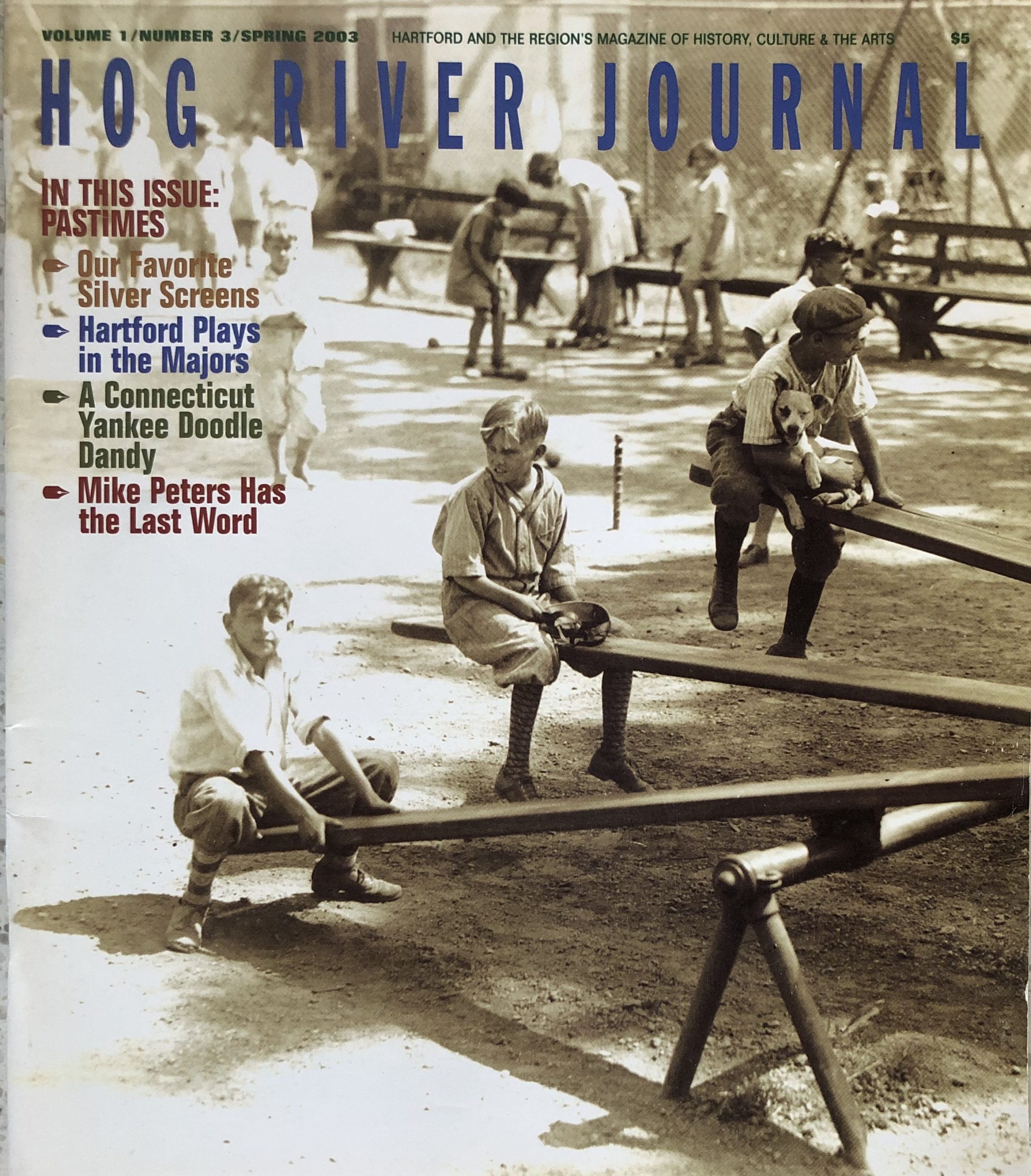(c) Connecticut Explored Inc. Spring 2003
Subscribe/Buy Back Issues!
A common thread running through the Spring 2003 issue on Pastimes is the sense of community that leisure-time activities engendered or were designed to foster. In the 18th century, one’s leisure-time choices may have been more limited but the objectives were often the same, as we discover in Vivian Zoë’s story on the young Noah Webster. Dancing was not only an important community activity, but a great way for eligible young men and women to check each other out.
Our photo essay in this issue recalls the modern sense of community that was fostered by the city’s movie theaters, both downtown and in the neighborhoods. Peter Baldwin’s story, Off the Streets and Into the Parks, reveals that concern was as strong a century ago as it is today for ameliorating the corrupting influence of the street on our youth. By developing leisure-time activities in newly created community spaces, civic leaders hoped to ensure that young people would grow up to be productive members of society.
And then there’s America’s love affair with baseball. David Arcidiacono tells us about the tobacco-spittin’, head-knockin’ Hartford Dark Blues, charter members of THE National League. That was just the beginning. Waiting to be fully told is a later chapter in Hartford’s baseball story when Max & Bill Savitt’s semi-pro team, the Savitt Gems, played exhibition games against, among others, Negro League teams and the St. Louis Cardinals in the 1930s at Bulkeley Stadium. [See “African American Greats in Connecticut Baseball,” Summer 2018.]
Norm Hausmann, a passionate baseball fan and resident of East Granby, has done some research on local baseball from the 1920s to the 1950s. He spent more than a few glorious days and summer nights at Bulkeley Stadium in the 1940s watching the Hartford Chiefs, the farm team for the Boston Braves. In a paper he wrote while a graduate student at Trinity College in 1997 he recalled one particular game when he was 14:
July 1948. Bulkeley Stadium. A night game. Wilkes-Barre Barons vs. Hartford Chiefs. My best friend Bob Bessette and I are at the game. The score is tied in the bottom of the ninth when Hartford scores on a very close play at the plate. The ball rolls loose from the Wilkes-Barre catcher as the Hartford runner slides across the plate. In frustration, the Wilkes-Barre pitcher picks up the ball and heaves it over the third base grandstand roof. Bob and I take off out of the stadium, fast. Behind the third base grandstand, lodged up against the side of the ball-bearing factory is a glowing white object. In a matter of seconds, Bob scales the 10-foot chain-link fences, somehow gets through a tangle of barbed wire at the top, drops to the other side and moments later has the baseball. How vivid the memory of this! Riding home on the bus that night, repeatedly looking at, gripping, turning that baseball over and over in our hands.
The Hartford Chiefs relocated in 1952 and with their loss, the stadium grew quiet. In 1960, it was torn down and replaced by a convalescent home. The stadium’s demise reduced Norm to tears, he recalls, and so he raised funds and had a brownstone monument placed at the site in 1998. Former mayor Mike Peters also has fond memories of Bulkeley Stadium and mounts the soapbox to make a case for why Hartford’s on-again-off-again relationship with pro baseball — and a downtown stadium — should be on again. A heightened sense of community might just be the most important thing we’d gain.
Lastly, I’d like to acknowledge Maureen Welch, our Trinity College intern, for her invaluable contributions to the magazine this spring semester. Maureen, with intelligence, initiative, writing skills, work ethic, and experience to spare, graduates in May and undoubtedly will go on to achieve great things. Thanks, Maureen!
Elizabeth Normen
Publisher
Hog River Journal (now Connecticut Explored) is Hartford and the region’s magazine of history, culture, and the arts and is named for the Hog River, now buried under the city. Through compelling stories and intriguing images, Hog River Journal uncovers the region’s cultural heritage with the aim of revealing connections between our past, present, and future.

